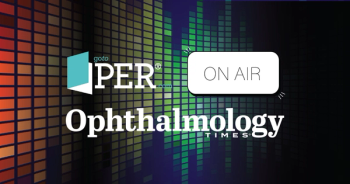
ASCRS 2024: What advancements in Light Adjustable Lens technology mean for clinicians and patients
Neda Nikpoor, MD, shares highlights from her presentation on the Light Adjustable Lens during an ASCRS symposia on IOL calculations.
Neda Nikpoor, MD, spoke to Ophthalmology Times about her presentation on the Light Adjustable Lens during an ASCRS symposia on IOL calculations.
Video Transcript
Editor's note - The following transcript has been lightly edited for clarity.
Neda Nikpoor, MD: Hi, my name is Neda Nikpoor. I am a private practice doctor—a cornea, cataract, and refractive surgeon in Honolulu, Hawaii. I have the pleasure of giving a talk in the IOL calculation section on Light Adjustable Lenses. So, how easy of a talk could I have gotten because honestly everything else in that session is all about how to do all these complex calculations, all the formulas. And my part is simple, because with the Light Adjustable Lens [RxSight Inc.], you literally just need to be within two diopters of sphere and three diopters of cylinder, and you can hit your target. But obviously, there's a little bit more to it than that.
So some of the data that's actually really pretty powerful around Light Adjustable Lens is that in the phase 4 data, well over 90% of eyes were within a half diopter for mean residual spherical equivalent, as well as residual astigmatism. And that really low amount of residual refractive error leads to better visual outcomes. And so patients had high rates close to 90% of seeing uncorrected 20/20 at distance, and over 90% of patients binocularly would see J1 or better at near.
The other thing that's really exciting with Light Adjustable Lens technology is we now have LAL+ [Light Adjustable Lens+] and LAL+ as most of you know has a little bit more extended depth of focus [EDOF] than the original LAL, which also has some EDOF built into it. And that translates into better range of vision for patients.
Now the really nice thing is we always say there's no free lunch. But honestly with this it kind of seems like there is. The only sacrifice that we've seen in distance vision across the study was 1 letter, and the improvement in near was significant. So the monocular distance corrected near mean in patients is 20/40, at near, which is really quite incredible for a monofocal lens that has some EDOF. The rates of glare, halo, dysphotopsia, or anything like that are still very, very, very low and no different from the traditional LAL.
So you can rest assured that with this lens, honestly, it seems based on the data that patients do get excellent distance and near vision and have great binocular vision and over 80% of patients in the study actually chose blended vision. So that makes IOL calculation a lot easier I think.
Newsletter
Don’t miss out—get Ophthalmology Times updates on the latest clinical advancements and expert interviews, straight to your inbox.











































